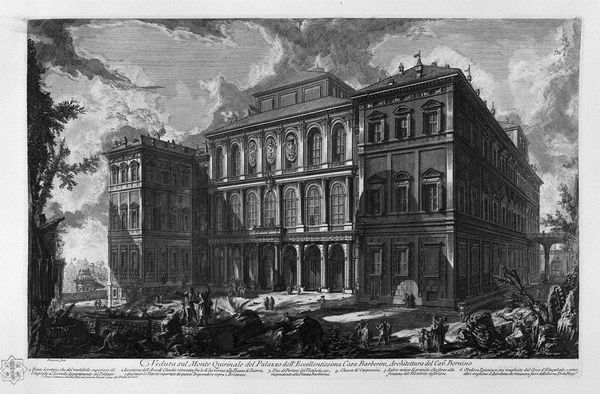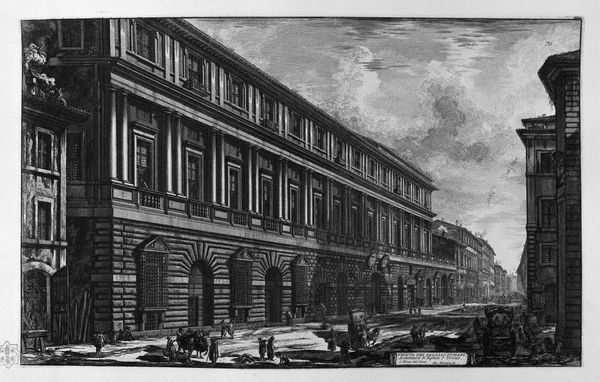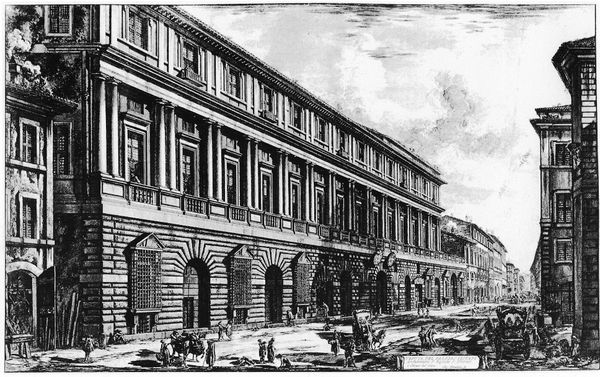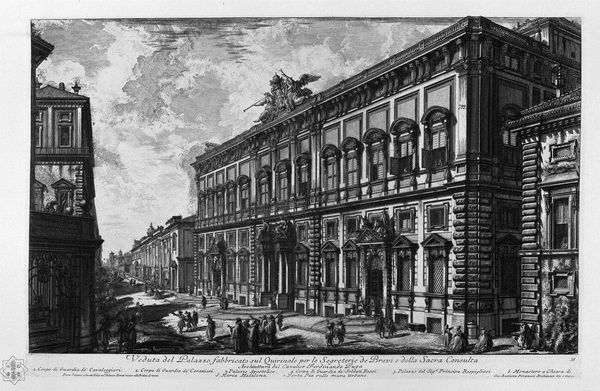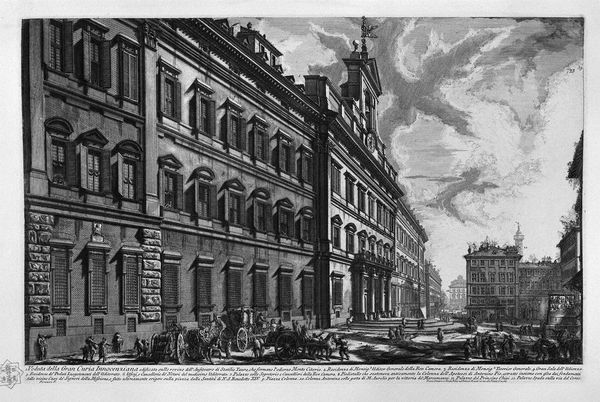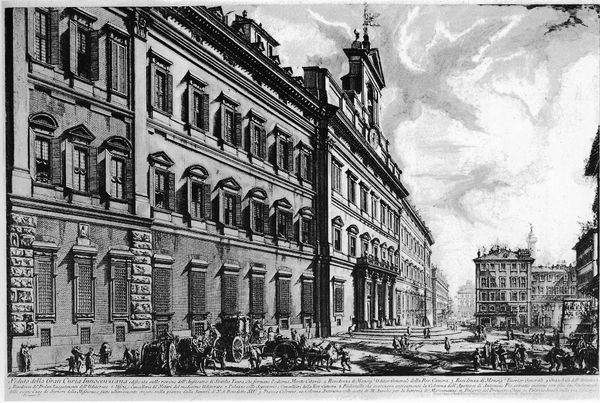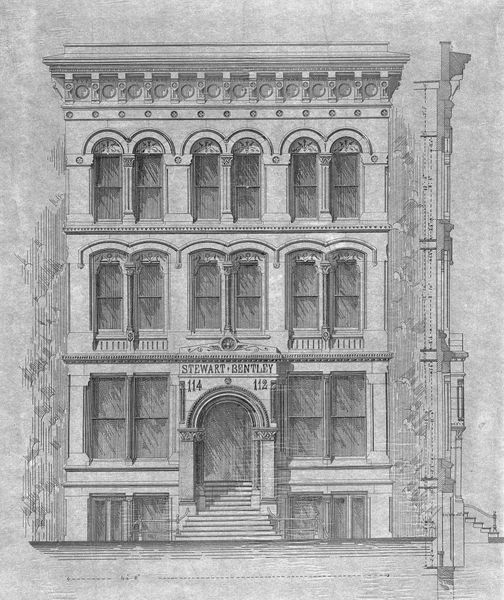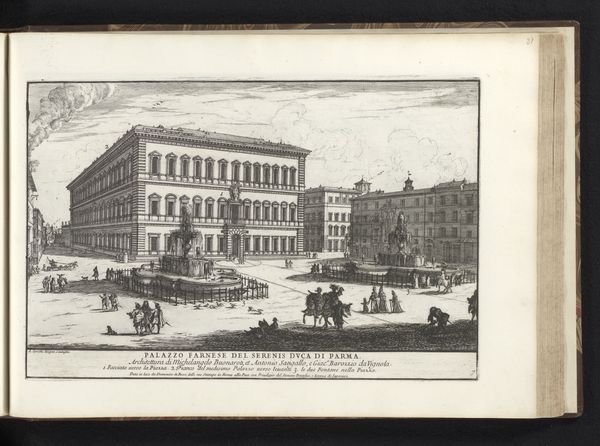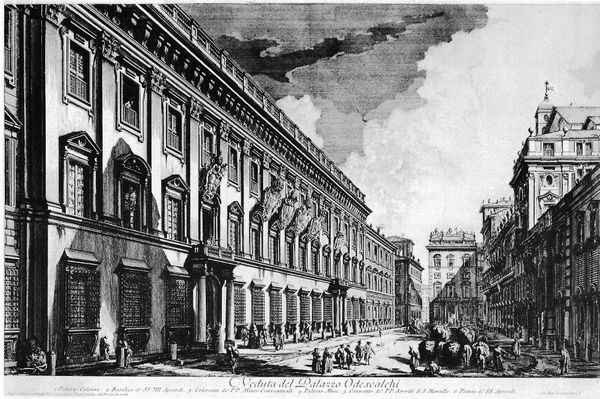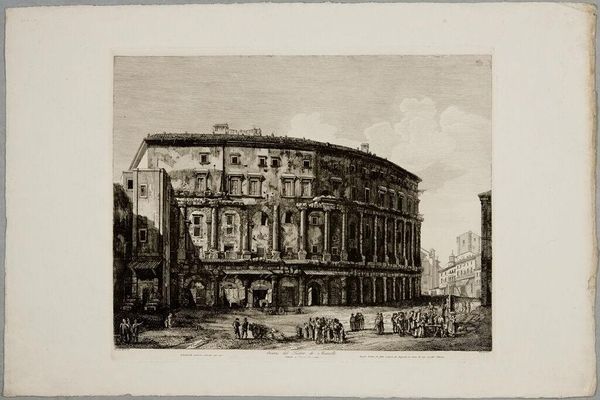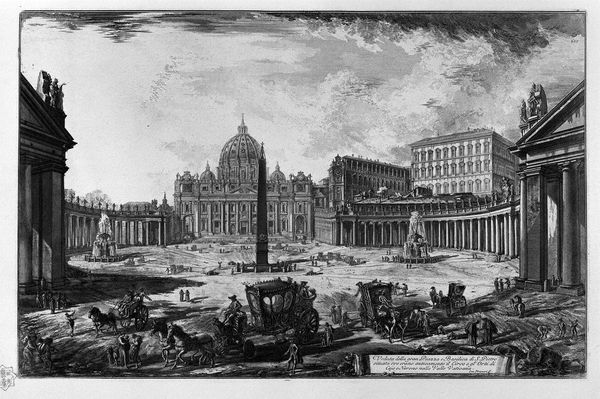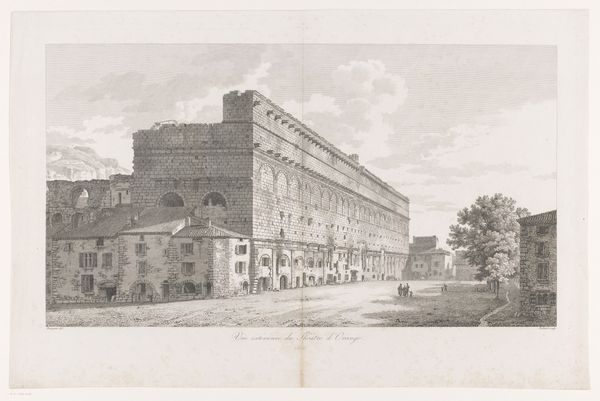
drawing, print, etching, engraving, architecture
#
drawing
#
baroque
# print
#
etching
#
black and white format
#
black and white
#
cityscape
#
engraving
#
architecture
#
building
Copyright: Public domain
Editor: We’re looking at Giovanni Battista Piranesi's "The Castle of the Acqua Paola on the Golden Mount," a detailed etching that presents a rather grandiose cityscape. I am immediately drawn to how imposing and solid the buildings look in contrast to the people populating the public square in front. What social narratives do you think Piranesi is conveying here? Curator: Piranesi wasn't simply depicting buildings. He was very aware of the power of imagery. This piece, part of his larger *Vedute di Roma* series, served to create a sense of Rome’s grandeur and its historical weight for a rising, tourist-fueled market. Consider the placement of the Acqua Paola itself: its position elevated on the Janiculum Hill literally and figuratively looms large over the everyday life bustling below. What might that elevated perspective suggest about the institution's power? Editor: That's interesting. I guess I initially just saw an architectural rendering, but your perspective helps frame this less as a purely objective depiction and more as a statement on power and spectacle. Do you see any commentary on the institution through the contrast with the figures bustling at street level? Curator: Exactly! Notice how Piranesi meticulously depicts the figures – tourists, laborers, carriages. These aren’t simply background details. Their presence and scale compared to the buildings underscore the power dynamic. While we are invited to admire the castle, are we also subtly made aware of our own comparatively smaller roles within that larger system? Are we meant to marvel or reflect on this disparity? Piranesi certainly intended these images to be consumed by those of certain wealth and influence; do you think it perpetuates the image, or is he making some gesture towards challenging that power dynamic? Editor: I hadn't considered that it could function on those levels. Looking at it again, there is a theatrical element in the positioning of those bustling in the square and how diminutive the scale seems. Curator: Absolutely! Thinking about his work through this historical and cultural lens, we begin to unpack not just what Piranesi shows us, but also why and for whom he was showing it. What an intriguing discussion to better understanding Piranesi. Editor: Thanks. You have given me much to consider beyond the surface details.
Comments
No comments
Be the first to comment and join the conversation on the ultimate creative platform.
